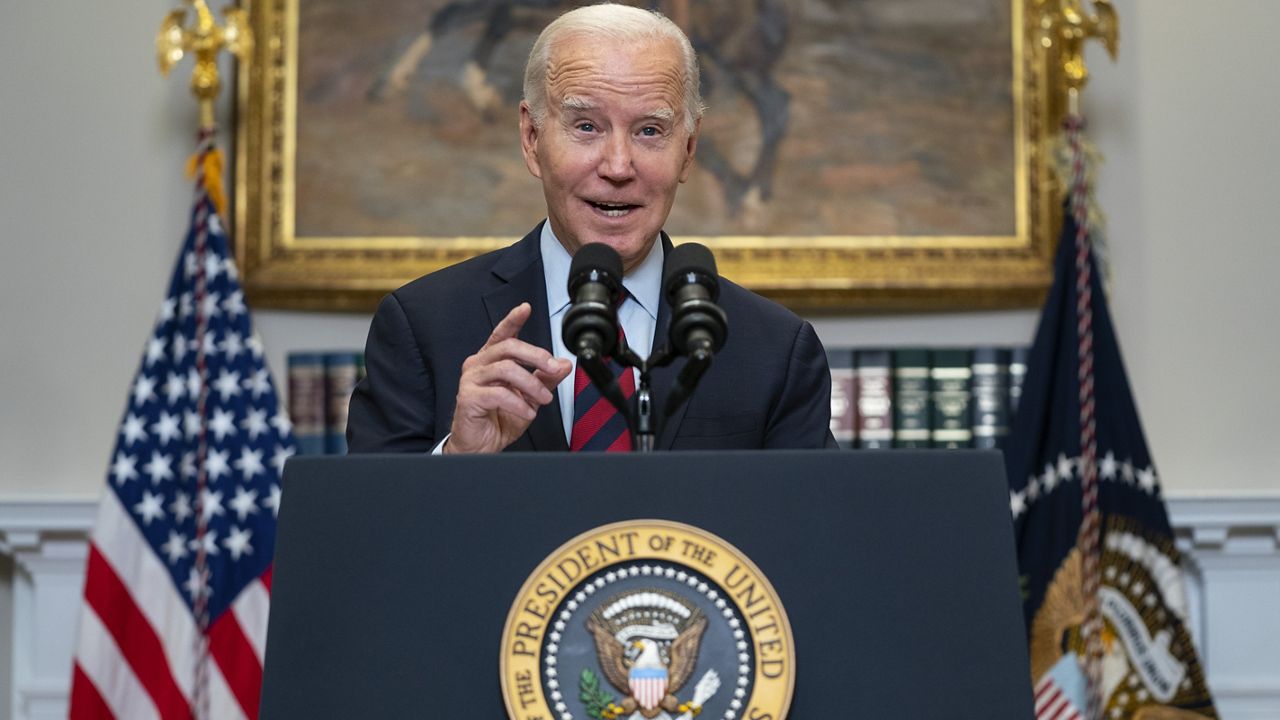The Biden administration announced Friday that starting next month, that some borrowers enrolled in President Joe Biden’s new student loan repayment plan will see their debt wiped immediately.
The White House said that borrowers enrolled in President Biden's SAVE (Saving on A Valuable Education) plan who originally took out less than $12,000 in loans and have made payments for at least 10 years will see their remaining student debt canceled.
Those who qualify will be notified that their loans are being forgiven automatically in February, about six months ahead of the date the administration previously laid out, administration officials told reporters on a call Thursday previewing the announcement.
In order to see their debt forgiven, borrowers must be enrolled in the administration’s SAVE (Saving on a Valuable Education) plan – the student loan repayment program launched in August after the Supreme Court’s rejected his broader forgiveness proposal.
“I am proud that my Administration is implementing one of the most impactful provisions of the SAVE plan nearly six months ahead of schedule,” Biden said in a statement on Friday. “Starting next month, borrowers enrolled in SAVE who took out less than $12,000 in loans and have been in repayment for 10 years will get their remaining student debt cancelled immediately.”
The Department of Education will set off on an outreach blitz to make sure those who are eligible sign up for SAVE and receive the loan relief, officials said.
On the call previewing the announcement, Education Secretary Miguel Cardona noted many of those who took out less than $12,000 in loans are borrowers who graduated from community college or those who never finished their degree but are still faced with student debt.
“Historically, low-balance borrowers have been among the most at-risk for higher rates of delinquency and default,” he said.
The Education Department on Friday also announced that enrollment in its SAVE plan reached 6.9 million borrowers as of this month. The figure, the administration said, is more than double the number of borrowers who were on the Biden administration's initial $400 billion student debt plan.
The SAVE plan lowers monthly payments for borrowers based on income, halts loans from growing due to unpaid interest and lessens requirements for low-balance borrowers to receive forgiveness. The administration previously estimated more than 20 million people could benefit from the plan and the typical borrower will save around $1,000 a year.
Opponents of the proposal say that it is unfair to those who already paid back their loans or did not go to college. They also point out debt forgiveness does nothing address the root cause of why college is so expensive and leaves many Americans in debt. A group of Republican senators tried late last year to overturn Biden's SAVE plan, but failed to do so despite winning over the support of one Democratic lawmaker, retiring West Virginia Sen. Joe Manchin.
In June, the Supreme Court ruled that the Biden administration’s plan to cancel $10,000 in student loans for low-to-middle income borrowers and $20,000 for Pell Grant recipients overstepped the White House’s constitutional authority.
Following the ruling, the Biden administration announced it will try a new path to forgiving student debt under the Higher Education Act of 1965. That plan is expected to take months to finalize.
The administration also announced a 12-month “on-ramp” repayment plan in which borrowers will not receive harsh financial penalties, such as being reported to credit bureaus or debt collection agencies, if they miss a payment between Oct. 2023 and Sept. 2024. The idea is to ease borrowers into paying federal loans, which restarted three months ago, after the three-year pandemic pause.
Some Congressional Democrats have urged Biden to make sure a new forgiveness plan is finalized before the end of the on-ramp period.
The White House says that, in total, Biden has canceled nearly $132 billion in student loans reaching more than 3.6 million borrowers since taking office in 2021.



